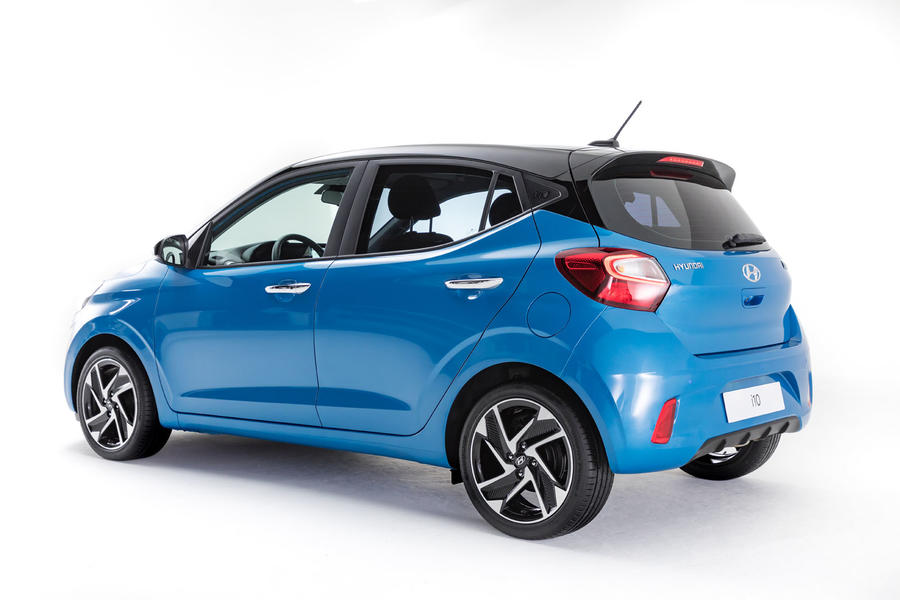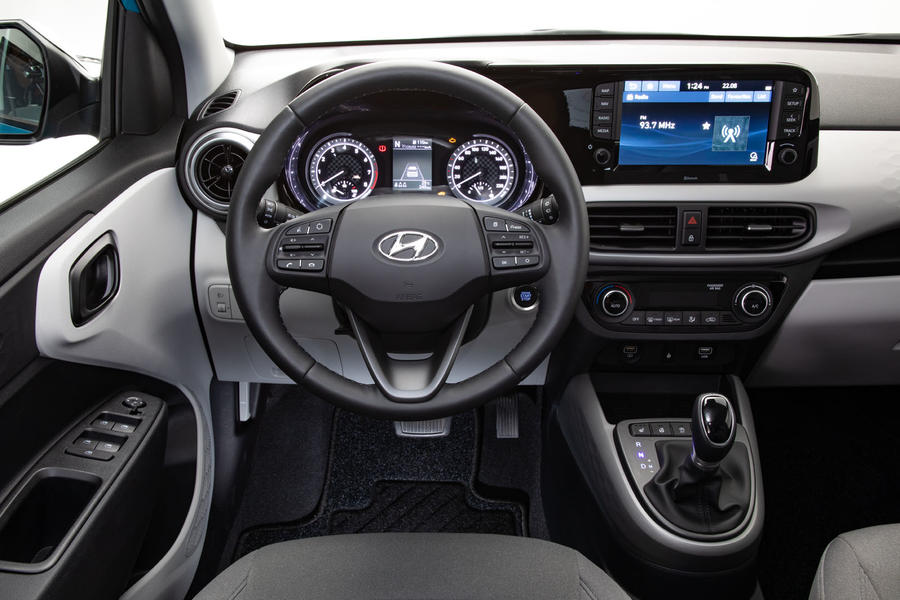Compact city car grows up with more dynamic styling, more space and new technology
The new Hyundai i10 is set to become the most advanced car in its class when it arrives early next year, with a comprehensive set of technology and safety upgrades.
The third-generation compact city car, which will arrive in the UK early next year and is set for a public debut at next week’s Frankfurt motor show, has been given a dynamic exterior overhaul to appeal to younger customers. Extended rear wheel arches have added 20mm to the width and the roofline has been lowered by 20mm over the outgoing model.
Hyundai has extended the i10’s wheelbase by 40mm, but smaller front and rear overhangs mean overall length has only increased by 5mm. Rear passengers benefit from extra leg room, while a 252-litre boot space is one of the best in the class.

Effort has been made to improve driving dynamics over the old model, with a more progressive brake pedal and more responsive steering.
As with the current i10, the daytime running lights are located within the grille, which has been made wider to reflect Hyundai’s current styling. 16in alloy wheels can also be added as an option for the first time.
Interior materials, connectivity features and safety systems have filtered down from the rest of the range, including an 8.0in touchscreen that Hyundai says is the largest available in the segment. Android Auto and Apple CarPlay support is included, as well as wireless smartphone charging and an optional rear-view camera. Automatic emergency braking and lane departure assistance systems, which are still rare inclusions in city cars, will also feature.
Hyundai’s Bluelink connected car platform can add app-controlled location tracking, live fuel prices and the ability to send navigation directions from your smartphone to the car.

Production will take place at Hyundai’s factory in İzmit, Turkey alongside the i20 supermini. Pricing has yet to be confirmed for the Volkswagen Up and Peugeot 108 rival, but there’s expected to be an increase over the current model, which costs from £9000.
Two petrol engines will be available at launch: a 66bhp 1.0-litre three-cylinder and an 83bhp 1.2-litre four-cylinder. Both can be specified with a five-speed manual or five-speed automated manual transmission, the latter of which Hyundai claims delivers superior fuel economy to a traditional automatic gearbox due to its lightness and reduced friction. An optional Eco Pack adjusts gear ratios and uses 14in wheels for even greater efficiency.
A more potent turbocharged three-cylinder petrol engine is expected to follow after launch, with the possibility of an upgraded N Line or true N performance model set to rival the Volkswagen Up GTI later in the car’s life.
READ MORE
How the scrappage scheme sold 39,000 Hyundai i10s
Hyundai plans more diverse designs for future models
Source: Autocar
